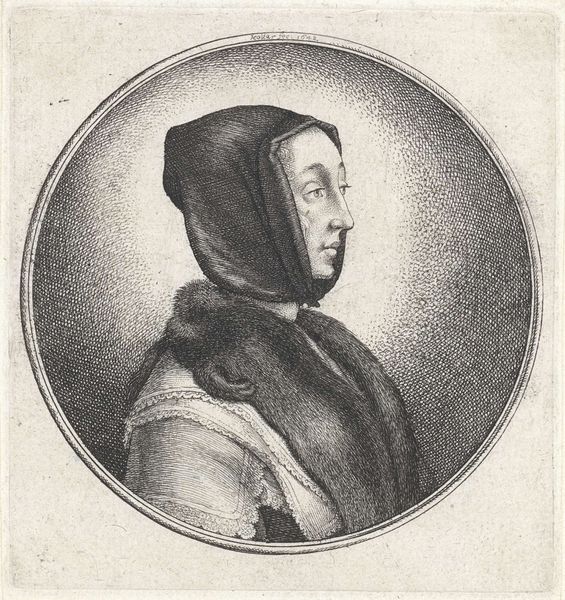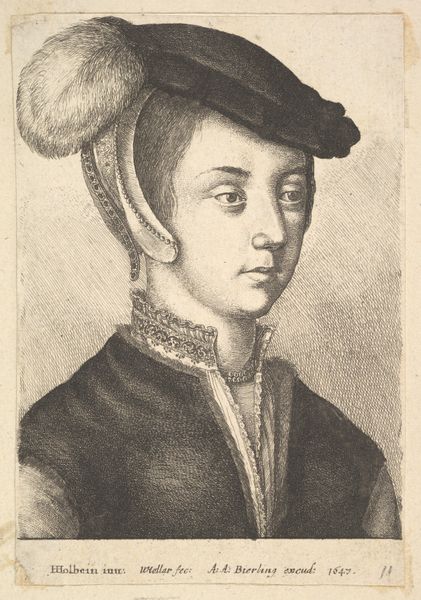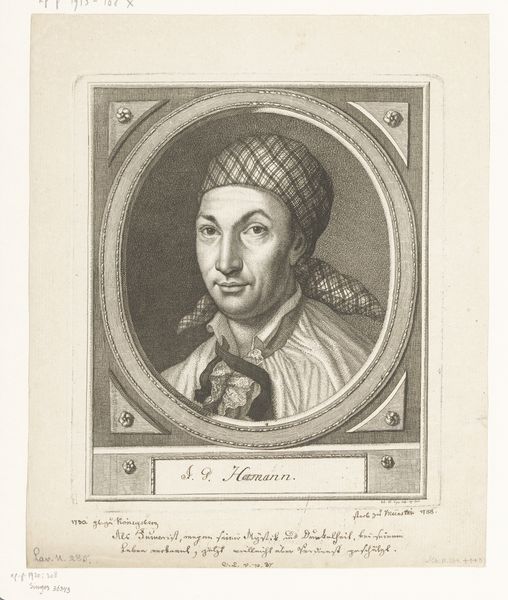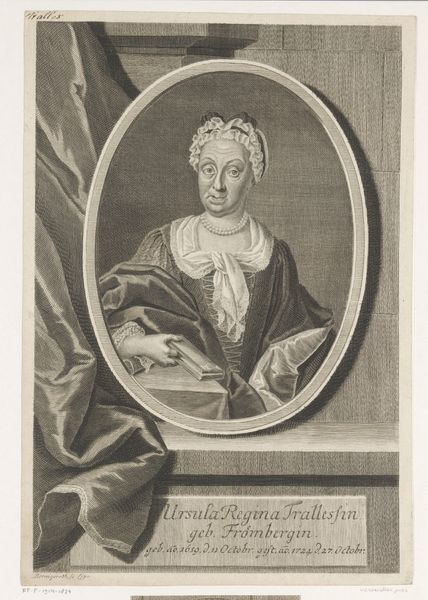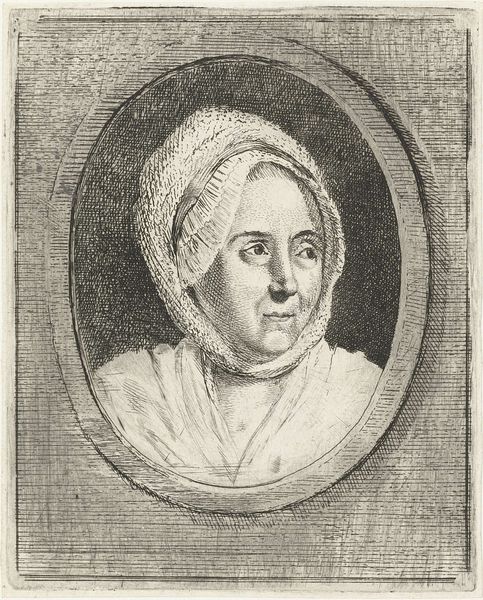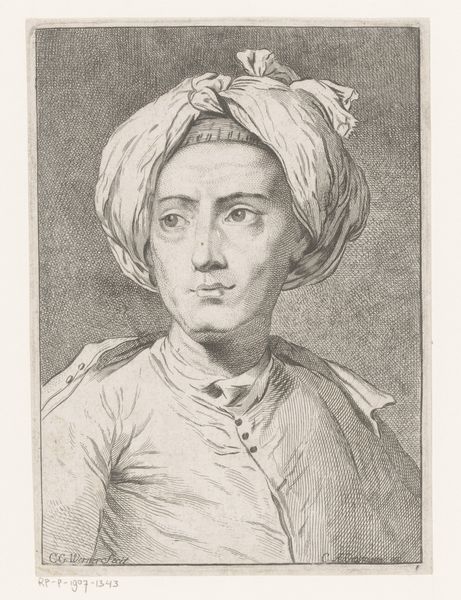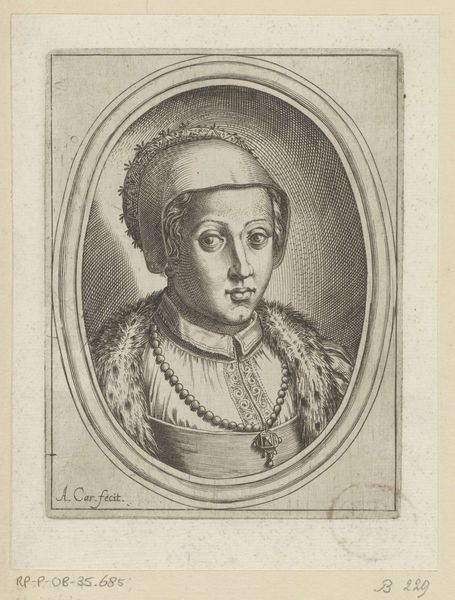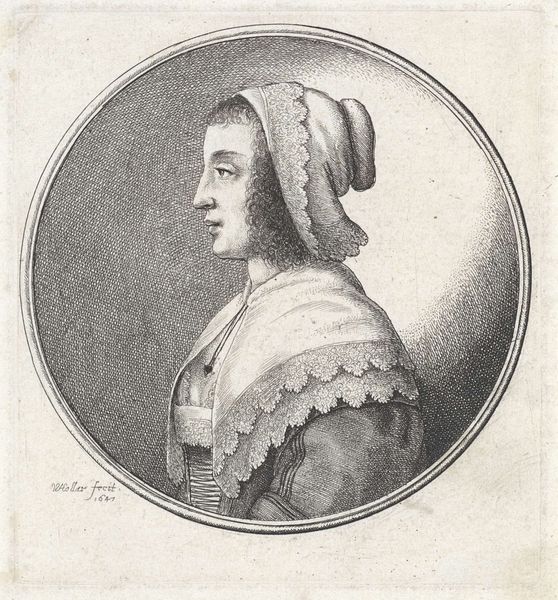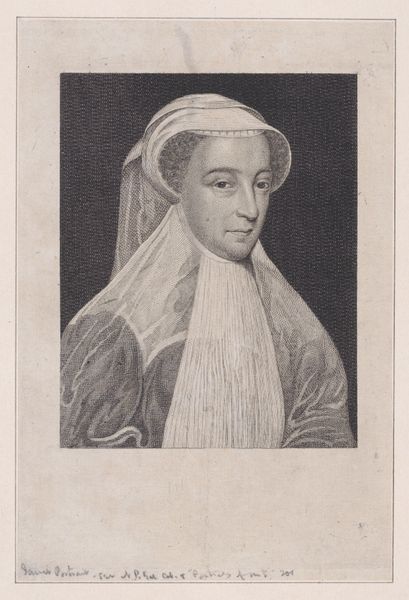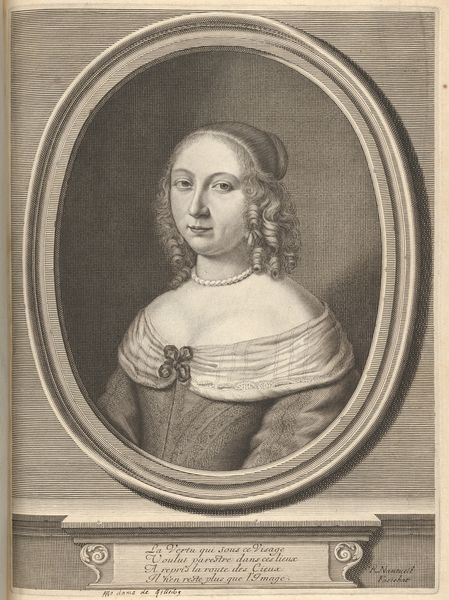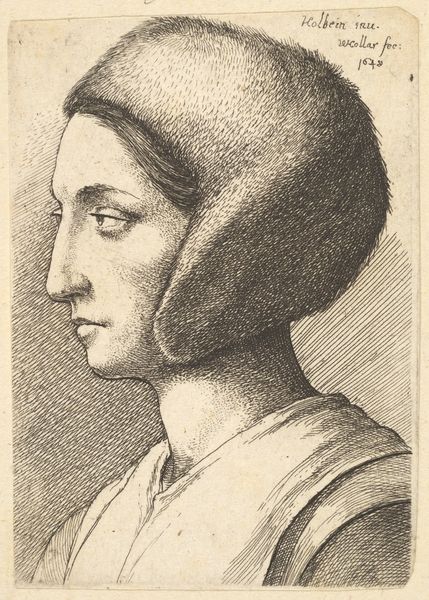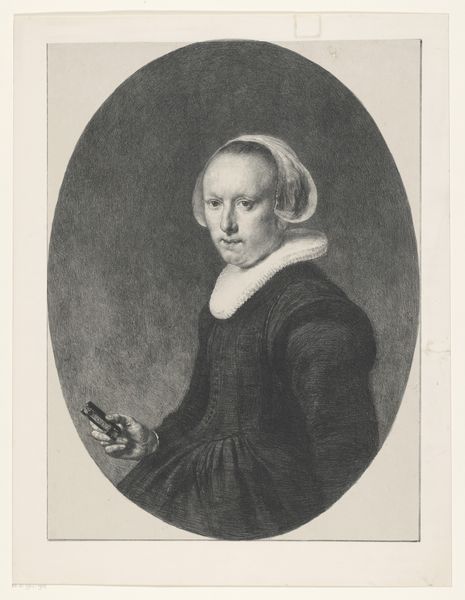
print, engraving
#
portrait
#
neoclacissism
# print
#
pencil drawing
#
portrait drawing
#
engraving
Dimensions: height 124 mm, width 86 mm
Copyright: Rijks Museum: Open Domain
Curator: Here we have Carl August Schwerdgeburth's engraving of Wibrandis Rosenblatt, likely created sometime between 1795 and 1878. Editor: The woman's gaze holds such a stark intensity. It's further contrasted by the very formal and somewhat stilted pose, which leaves me feeling… ambivalent. Curator: Note the textures created by the engraving technique. The density of lines forms shadows and evokes a certain weightiness. Do you sense a specific meaning emerging from these symbolic qualities? Editor: Absolutely, the fur trim, the delicate head covering; it's all suggestive of a particular social status. This presentation of Rosenblatt speaks to the codes of conduct women faced at that time, their roles closely defined by patriarchal structure. It demands a certain level of reserved modesty. Curator: In some traditions, head coverings signify humility and devotion. Rosenblatt wears a unique form—perhaps a widow’s cap. It also recalls portraits of learned women or humanist scholars in similar headwear from the 16th and 17th centuries. Could this attire suggest intelligence, wisdom, or moral piety? Editor: Certainly. And yet, it could simultaneously act to restrict the female image. In wearing it, she presents herself according to pre-determined gender expectations; thereby both defining and limiting the extent of self-presentation, regardless of intention. Curator: This ambiguity contributes to the richness. While acknowledging the artist's historical background, your insights are so revealing. Editor: The power of revisiting artwork through different lenses shows us the social underpinnings of history; it’s important to remember context. Curator: Understanding the symbols allows us to better consider art as something perpetually evolving and changing—as with historical inquiry in general.
Comments
No comments
Be the first to comment and join the conversation on the ultimate creative platform.
